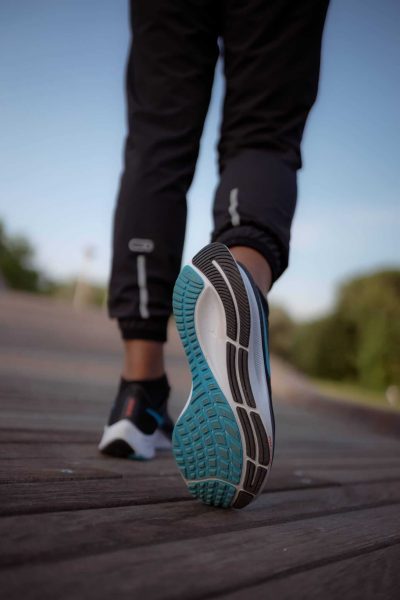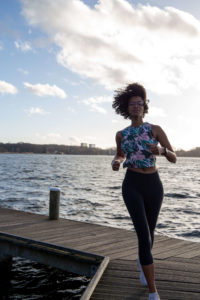With so many different choices and styles on the market, picking the correct running shoes can be a rather daunting task. Just because a shoe fits nicely doesn’t necessarily mean it is the proper shoe for you. Choosing a shoe that works best for your running stride is essential to not running yourself into any unnecessary injuries.
Neutral, Underpronation, or Overpronation?
Pronation is the rolling of the foot from the heel to toe through the foot strike. In a proper (or neutral) stride, the heel strikes on the outside of the foot and moves up to the ball evenly, pushing off the center of the forefoot.
If you’ve never had your running gait analyzed, chances are you could be wearing the wrong type of shoe. Most shoe stores will offer free gait analysis, but if that’s not an option, you can also tell a lot about your stride from the wear patterns on an older pair of running shoes. Where your old soles are worn will tell you what type of gait you have and which type of shoes you should be looking for.
Neutral – Neutral runners generally have normal arches. If the wear on your shoes is mostly on the balls of your feet and the outside of the heel, that’s a sign of neutral pronation.
Underpronation (Supination) – Runners with high arches generally tend to underpronate (supinate). Underpronation will show heavy wear only on the outside edges of their shoes. With each step, the foot rolls to the outside and only pushes off with the edges of the outside toes. This inhibits the foot’s ability to absorb the impact of the foot strike fully.
Overpronation – Runners who overpronate generally have flat feet, but not always. This is caused by the foot rolling to the inside with every step, and all the weight pushing off the first and second toe. Heavy wear on the inside edge of the ball, big toe, and inner heel are signs of overpronation.
Which Shoe for Which Gate?
Now that you know your running gait type, you can use that information to pick a shoe that will support your feet the best.
Neutral Cushioned Shoes – Neutral shoes are designed for runners with a neutral stride or a very slight underpronation. Cushioned shoes will help absorb the impact your foot doesn’t naturally absorb.
Stability Shoes – Stability shoes are designed for runners with a normal or slightly flat arch, who pronate slightly. They offer a good balance of support and cushioning.
Motion Control Shoes – Motion control shoes are designed for runners who have flat feet, and/or overpronate (more than slightly). They are designed to stop your feet from rolling in too far with every step. These shoes offer the most support and control and are generally manufactured with a wide, straight shape. If you overpronate, motion control shoes should be worn when running to help support the arches and heels.
Tips For Picking New Shoes
Here are some tips for finding the perfect pair of shoes for your feet and gait.
- Go to a specialty shoe store instead of a big box store. They are more likely to give you a proper gait analysis rather than trying to sell you a shoe that they make the most commission on.
- Take an old pair of running shoes with you so they can look at the wear pattern on the soles. Don’t take shoes that you’ve also used as walking shoes, as your gait is different when walking compared to running.
- Wear the type of socks you run in to get the proper fit.
- Try multiple shoes and brands. Every brand will fit a little bit differently, so trying them all gives you the best chance of finding one perfect for your foot.
- Measure both of your feet. Chances are, one foot is slightly larger than the other. Fit your shoes to the bigger foot, not the smaller one.
- Keep in mind that different brands will have slightly different sizes. A Nike size 8 will likely fit differently than a Brooks size 8.
- Make sure they are big enough. Your feet swell the longer you are on them, so you need some extra space in your shoes to allow for this. The general rule is to have about a thumbs width between your big toe and the front of the shoe.
- Pick a shoe for the terrain you plan on running on. Trail shoes have much more aggressive tread patterns than road shoes, which is important when running on loose, uneven, or slippery surfaces.






